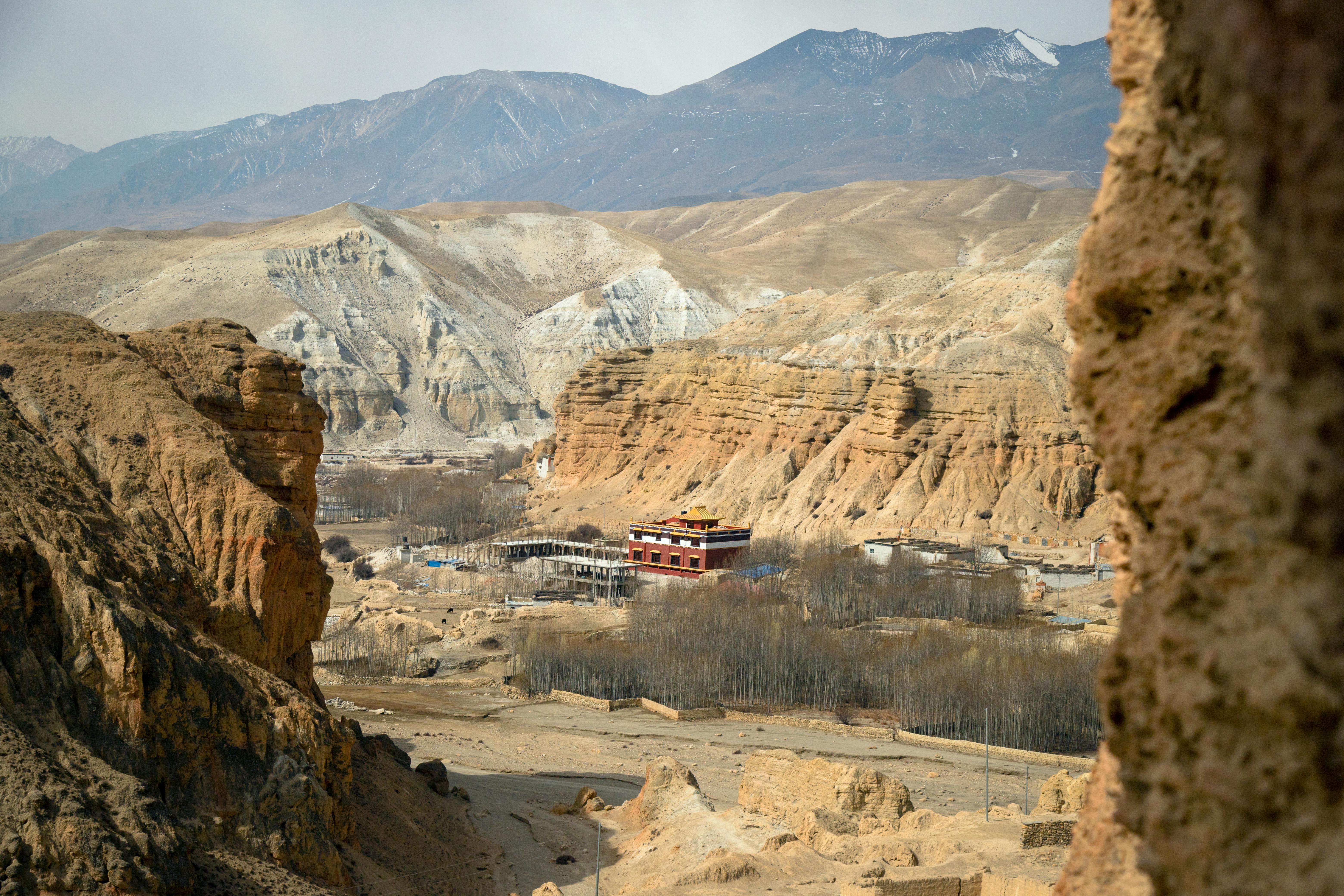The Upper Mustang Trek is a journey into one of the most culturally and geographically unique regions of Nepal. Once a restricted kingdom, Mustang was only opened to trekkers in 1992 and still retains much of its Tibetan heritage and isolation. This hidden valley, located in the rain shadow of the Himalayas, offers an otherworldly landscape of eroded cliffs, barren plateaus, and ancient cave dwellings carved into sheer rock faces.
The trek begins with a scenic overland journey from Kathmandu to Pokhara, and from there to the lower reaches of the Annapurna region. You'll gradually ascend through lush rhododendron forests and iconic villages like Ghorepani and Tatopani before entering the arid landscapes of Mustang. The trail follows the Kali Gandaki River northward past the medieval villages of Kagbeni, Chhusang, Syangboche, and Ghemi, eventually reaching the walled city of Lo Manthang, the heart of Upper Mustang and former royal capital.
Lo Manthang is a highlight of the journey, where you'll explore ancient Buddhist monasteries, royal palaces, and traditional mud-brick houses. The return route includes visits to the sacred site of Muktinath, a revered pilgrimage spot for both Hindus and Buddhists, and finally ends with a drive back to Pokhara. The blend of dramatic high-altitude scenery, rich Tibetan Buddhist culture, and off-the-beaten-path adventure makes this trek an unforgettable Himalayan experience.
Travel Notes:
Best Season:
-
Spring (March–May): Mild weather, clear views, and blooming wildflowers.
-
Autumn (September–November): Stable skies, crisp air, and ideal trekking conditions.
Permits Required:
-
Restricted Area Permit (RAP) for Upper Mustang
-
Annapurna Conservation Area Permit (ACAP)
-
TIMS Card (Trekkers’ Information Management System)
Trek Style:
-
Combination of teahouse lodges in lower regions and tented camps in remote areas.
Difficulty:
-
Moderate to challenging. Suitable for trekkers with good fitness levels.
Maximum Elevation:
-
Lo Manthang: 3,810 meters
-
Muktinath: 3,800 meters









